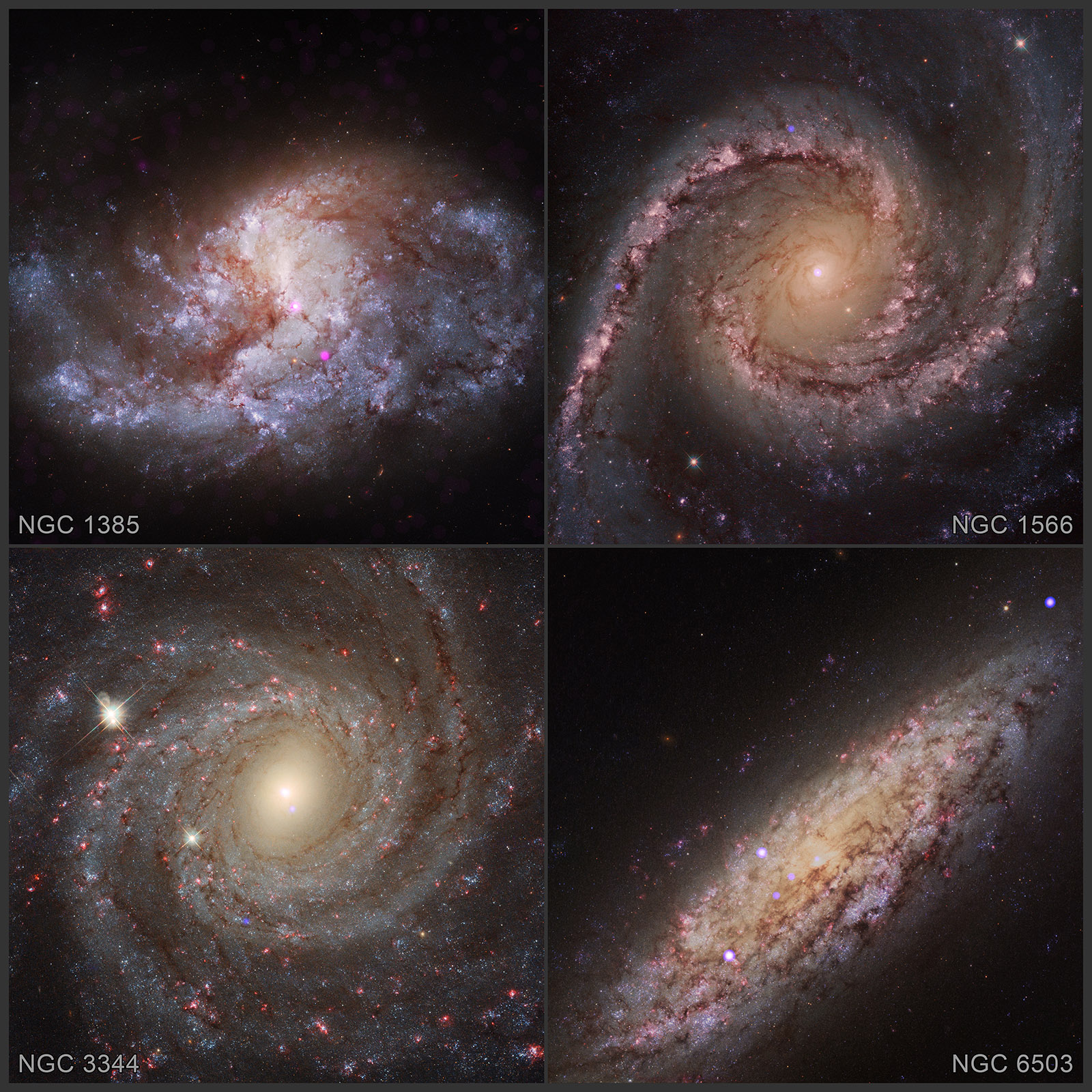Researchers have released a new report digging into the possibility of black holes devouring thousands of stars as they grow. The astronomers say growing black holes appear to be following a violent path to grow their weight. The researchers published a paper on their recent findings in The Astrophysical Journal.
Growing black holes are violently demolishing thousands of stars as they pack on mass

A new survey of over 100 galaxies has uncovered signs of growing black holes devouring thousands of stars in their vicinity. Ultimately, 29 of the galaxies that astronomers observed using NASA’s Chandra X-ray Observatory showed evidence of black holes near their centers.
The group released images of four of those galaxies, NGC3344, NGC 6503, NGC 1385, and NGC 1566. Each image was captured by the Hubble Space Telescope and then overlayed with imaging from Chandra. The result is a collage of galaxies with growing black holes outlined in blue. Most of these galaxies contain multiple black holes, too. At the least, each galaxy has a black hole at its center.
The astronomers say that the results from the observations show a “violent path for at least some of these black holes.” The path it’s referring to is one of destruction, which the researchers say has led to the growing black holes devouring thousands (if not more) of stars to chunk up.
Runaway growth
According to the new study, the growing black holes responsible for this destruction are stellar-mass are fueled by what astronomers call “runaway growth.” Essentially, stellar-mass black holes are the smallest type discovered so far. They are usually 5 to 30 times the mass of the Sun. However, when they suffer from runaway growth, the astronomers believe they become “intermediate-mass black holes”, or IMBHs.
These IMBHs are the growing black holes that continue to rain destruction on nearby clusters of stars. While larger than stellar-mass black holes, the astronomers say they are smaller than the much bigger supermassive black holes. Supermassive black holes typically live at the center of galaxies. In fact, we have one at the center of our galaxy. Scientists even believe it could be leaking.
The astronomers believe the runaway growth of stellar-mass black holes gives birth to IBMHs. These growing black holes continue to eat away at nearby stars. However, the astronomers seem to believe it only applies to certain types of stars.
According to the report, one of the keys to making an IMBH may be its environment. The researchers conducted theoretical work that shows only star clusters of a high enough density appear to be affected. As such, some star clusters are able to pass by the growing black holes without issue. However, if the cluster is above a threshold value, a stellar-mass black hole at the center of the cluster may undergo rapid growth as it razes the stars and ingests them.
The researchers also say that this process can affect black holes anywhere in the universe, at any time. That means there could have been intermediate-mass black holes forming as far back as right after the Big Bang.
Looking for more news like this? Check out this 4 billion-year-old comet hurtling into our solar system.







